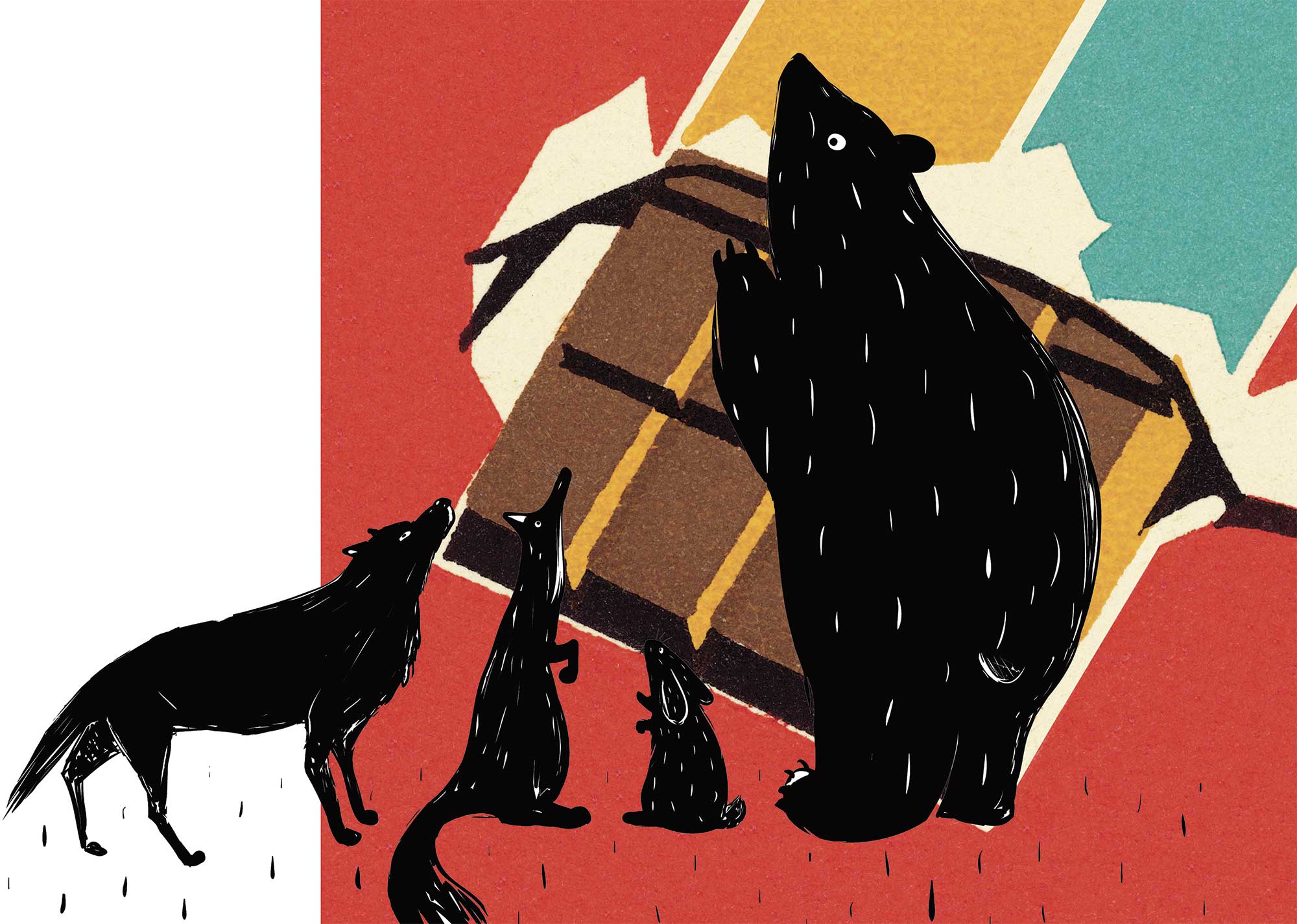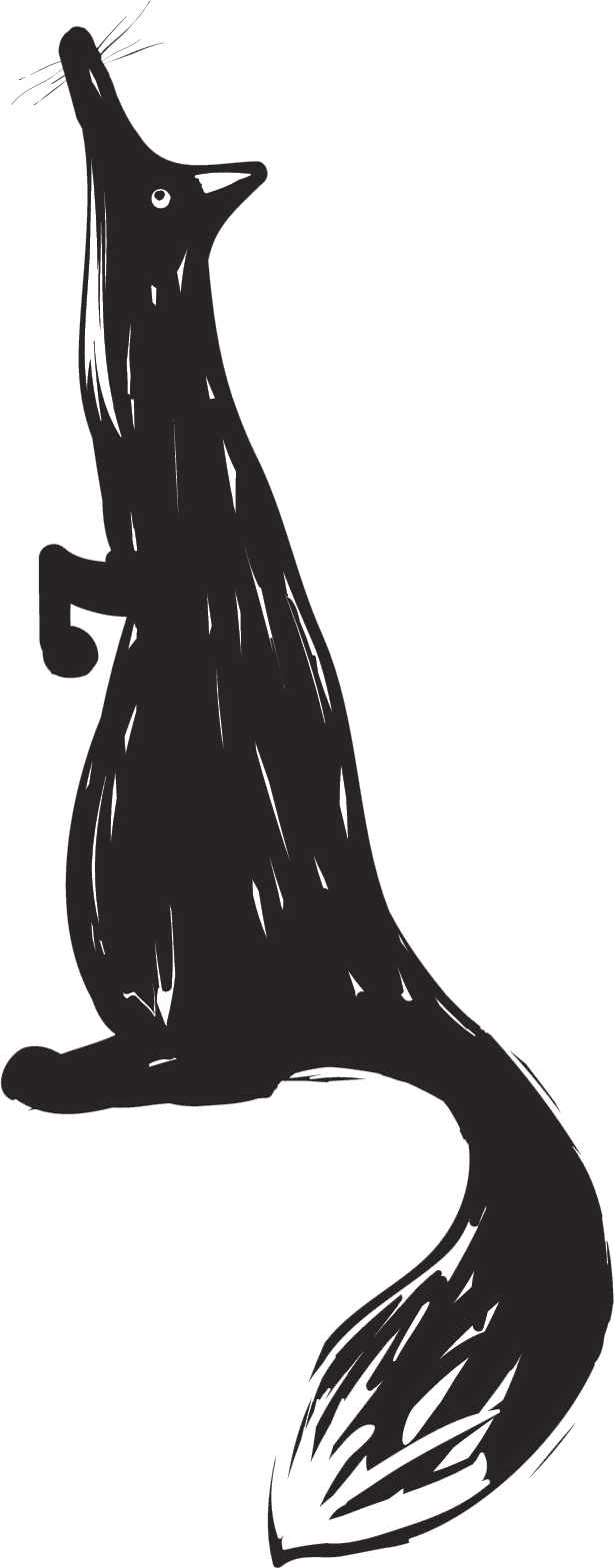Habits
ampsite 113 is the first overnight site that northbound A.T. thru-hikers reach when they enter the Great Smoky Mountains National Park. As a ridgerunner in the Smokies, part of my duty is the maintenance of sites like 113. For many hikers, it serves as a spot for a short lunch break, or one of countless overnight stays on their long journey north. Humans, however, are not the only frequenters of the site. During my three-month season, I encountered the same mother bear and her cub at campsite 113 no less than ten times. They became a feature, a constant. I would yell and throw rocks until they ran away, but without fail they would be there the next time I visited the site.
It was obvious these bears were habituated to humans. A wild bear, or other wild animals, will run away at the first sight of a hiker. But this mother bear and her cub couldn’t care less when I came along, until I yelled at them. It was likely that the mother had received some sort of food reward from the area. Maybe food scraps leftover from a messy meal, or errant overnight storage that yielded a bounty of calorie-rich treats.

Habits
ampsite 113 is the first overnight site that northbound A.T. thru-hikers reach when they enter the Great Smoky Mountains National Park. As a ridgerunner in the Smokies, part of my duty is the maintenance of sites like 113. For many hikers, it serves as a spot for a short lunch break, or one of countless overnight stays on their long journey north. Humans, however, are not the only frequenters of the site. During my three-month season, I encountered the same mother bear and her cub at campsite 113 no less than ten times. They became a feature, a constant. I would yell and throw rocks until they ran away, but without fail they would be there the next time I visited the site.
It was obvious these bears were habituated to humans. A wild bear, or other wild animals, will run away at the first sight of a hiker. But this mother bear and her cub couldn’t care less when I came along, until I yelled at them. It was likely that the mother had received some sort of food reward from the area. Maybe food scraps leftover from a messy meal, or errant overnight storage that yielded a bounty of calorie-rich treats.

The Ursack is a product that tries to allay the disadvantages of a bear canister while providing a similar level of ease of use. An Ursack is a soft-sided container made of Spectra, or Spectra and Kevlar, depending on the model. This fabric is resistant to punctures from bears, is lighter than a canister, and packs more easily due to its collapsible nature. An Ursack is secured using a series of knots to seal the sack closed and then tie it to a tree. It typically is less fuss than a bear hang, but is more work than a canister. A disadvantage of the Ursack is that its contents may be crushed by a bear and any food may become inedible. Most importantly, Ursacks are not a replacement for canisters in jurisdictions that require them. The regulations that may soon pass in the national forests in North Carolina do not include language that allows for an Ursack. The Great Smoky Mountains National Park, while partially in North Carolina, will not be affected by the U.S. Forest Service regulations. Agency-installed bear cables are still the required system of food storage in the Smokies.
It is important to note that some overnight sites on the A.T. have infrastructure for food storage already in place, similar to the Smokies. Bear cables, boxes, and poles are the most common permanent fixtures used at shelters. These are suitable options for hikers who make use of the shelters and they increase the safety and appeal of the sites themselves. Campers should not expect one of these at every site, however. Only about 40 percent of A.T. overnight sites have food storage devices installed. Because of their infrequency, permanent food storage fixtures should not be relied upon, and campers should still carry their own form of food storage at all times.
Lastly, some campers will sleep with their food, although not many are willing to admit it. This is an irresponsible and dangerous method for the A.T. Sleeping with one’s food habituates animals to shelters and tents and greatly increases the likelihood of a mutually negative encounter with wildlife. It is one of the reasons that mice are a problematic and universal experience in the shelters along the Trail. A hiker that slept with their food at a shelter or campsite on a previous night trains nearby critters to investigate that area in the future. When animals become habituated, it is possible you may have a late-night visitor looking for an easy reward, even if you do not have food in your sleep space. Additionally, the habituation of mice to shelters can attract other unwanted visitors. Snakes — both venomous and non-venomous — will eat the mice that live in the shelters, thus creating more unnecessary and dangerous encounters with humans. Hikers are always on the move, sometimes at the expense of the places they leave behind. Shelters, campsites, and the animals that live nearby are static. One site could have the same wildlife visitor many times over, just like the bears I saw at Campsite 113.
Taking the time to protect our food when we’re in our most dormant states helps nocturnal creatures thrive when they are the most active. When given the choice of foraging for food, or taking an easy meal due to human error, an animal will always go for the easy meal. Habituation helps animals overcome their natural wariness of people, which can lead to aggressive and destructive behavior. When humans and animals come in conflict, animals ultimately lose. Proper food storage is not just for yourself, it’s for the hiker behind you, and it’s especially for the wildlife that lives nearby. We are, after all, only visiting.